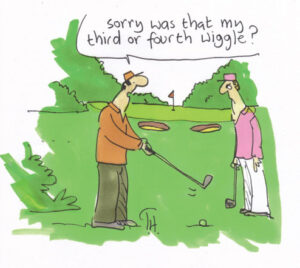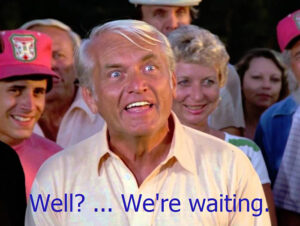

The LPGA is trying to single out slow players by posting a list in the players’ locker room. The list shows who have had slow playing times and notes both fines and any penalty strokes given. Both fines and penalties for slow play are basically non-existent on the tours. Despite the public shaming in the locker rooms, pace of play remains an issue.
Slow play drives golfers of every ability on every course batty. According to Golf Advisor, “slow play is considered one of the cancers of the game.” It drives players away. And, it’s been an issue for decades. Hall of fame player Lee Trevino wrote a major article about it nearly 50 years ago and all his ideas to speed up play still hold true today. There is even data now to suggest that slow play will increase or cause higher scores. Yikes!
Now I know every golfer, man or woman, thinks they are not slow. I have seen some of the slowest players I know assert this. Here are five things all players—fast or slow—can do which will speed play:
1. Ready Golf

Rule 6.4 allows playing out of turn in match play by agreement. It says:
“Exception – Playing Out of Turn by Agreement to Save Time:
- The player may invite the opponent to play out of turn or may agree to the opponent’s request to play out of turn.
- If the opponent then makes the stroke out of turn, the player has given up the right to cancel the stroke.”
For stroke play, it allows and encourages players to play out of turn in a safe and responsible way to save time or for convenience.
2. Picking Up
Under the new World Handicap System, whenever the format of play allows, you are encouraged to pick up once you’ve reached your maximum hole score for handicap purposes – which is a Net Double Bogey. Net Double Bogey = Gross Double Bogey + any handicap strokes received on a hole.
3. Continuous Putting
Once it is your turn to putt, you should continue to putt until your next putt is conceded or you hole out, unless in doing so you would stand on another player’s likely line of play. (Many years ago this was a rule you had to follow. Some local PGA section tournaments have implemented it to speed play in recent years.)
4. GET OFF YOUR PHONE!
You came to the golf course to enjoy a round of golf with the company of your friends. Phone calls happen and sometimes we have to take them, but if you’re carrying on a casual conversation while others playing or setting down your phone while you are hitting, you should seriously ask yourself if you should even be on the golf course. If you have to pick up your phone then let whoever is on the other line know that you have to make it quick. Or text them back: ”Golfing with friends. I’ll call you when I’m done.”
Golf is a time for us to get away from the hustle and bustle of everyday life. We get to ignore our devices and enjoy nature, the company of friends, and the feeling of puring a 5 iron to 12 feet to try and save par. Make sure that you silence your phone as well. It is impossible to concentrate when somebody’s phone ringer is going off when you are addressing your golf shot. It happens to everyone, so do us all a favor and turn it off or silence it before the first tee. You will enjoy your round more yourself as well!
5. Play The Right Tees
Play from a distance that’s suitable to your game. Alice Dye, wife of famed course designer Pete Dye and a member herself of the American Society of Golf Course Architects, wrote “the average course length for women is 5800 yards…low handicap women would be most comfortable playing course that is approximately 5,440 yards long and the average woman golfer would find golf most pleasurable on a course that is 4,800 yards.” This game is hard enough –let’s not make it harder by involving our egos.



